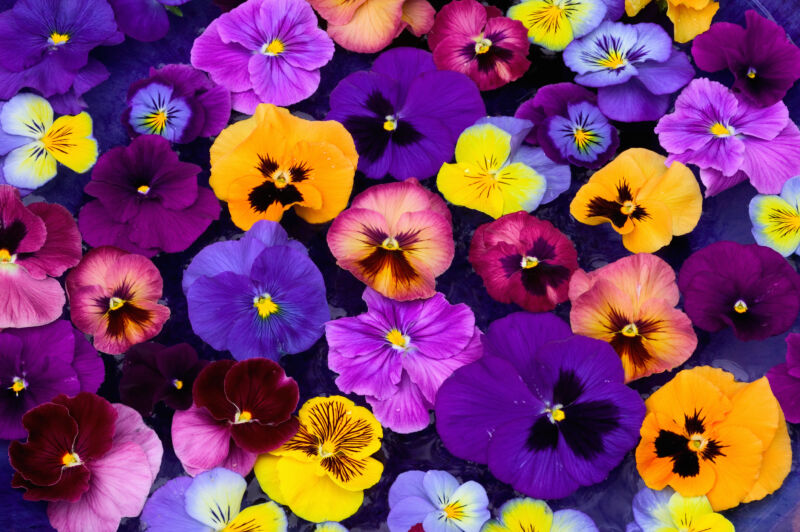I can handle this myself —
Fewer pollinators means more self-pollination, less food for bees.

In a striking experiment, scientists from the French Centre Nationale de la Recherche Scientifique (CNRS) and the University of Montpellier have observed the impact of selective pressure on a flowering plant. By comparing the pansy flower variety of today that grows in the Paris region to those regrown from the seeds of the same variety collected in the 1990s and 2000s, the researchers have observed notable differences.
According to the study’s co-author, Pierre-Oliver Cheptou, the plant’s evolution over this period has resulted in a 25 percent increase in self-pollination (or selfing) in modern two plants. “We also noticed a 10 percent decrease in the flower size and a 20 percent reduction in the nectar production, which suggests the decrease in rewards for pollinators such as bumblebees,” he said.
To confirm this outcome, Cheptou and his colleagues conducted behavioral tests involving bumblebees “which preferred the ancestor plants,” Cheptou said.
He added that the study showed the impact of pollinators’ decline on the reproductive system in these plants.
When mom and dad are the same plant
Elaborating on the experiment techniques, the study’s lead author, Samson Acoca-Pidolle, said the researchers used “resurrection ecology,” which involved using plant seeds from the 1990s and 2000s that were picked from the fields in the Paris region and stored in fridges in two botanical conservatories. “In 2021, we went to the same fields to collect the seeds of the descendants of the same flowering plant,” he said. For the study, all the plants were cultivated in a greenhouse at the same time of year to ensure consistency.
Cheptou said that to determine the selfing rates of the ancestor and descendant varieties, the team used a classical molecular technique that involved measuring the frequency at which individual plants had stretches of chromosomes with identical versions of genes. This happens often in selfing since the maternal and paternal copies of a chromosome come from the same individual.
According to Acoca-Pidolle, the research team was surprised at the rapidity of the plant’s evolution in the natural environment. “It seems that the pollinators’ decline is already strong, and there is already selective pressure on this species. The other significance of the result is that we are currently observing the breakdown in the plant-pollinator interaction for this species,” he added.
Acoca-Pidolle said the study suggests that the decline of pollinators could become self-reinforcing. “If plants produce less nectar, we can predict that pollinators will have less food and this could increase the pollinator decline,” he said.
Everything is a trade-off
This adaptation may not necessarily turn out to be beneficial for the plant. “It depends on the time scale we are considering this adaptation as an answer to the selective pressure. In the long term, we know that selfing species have a higher extinction rate than out-crossing species,” he said.
Although this study was restricted to a single plant species, Cheptou suspects a similar evolutionary adaptation could be taking place in other species, too. “For plants that can practice at least a little selfing, we should expect this result. But this has to be checked by experiments,” he said.
According to Cheptou, future research should investigate if a similar pattern exists in this plant species elsewhere in Europe and see if a similar adaptation has occurred in other species.
“The other interesting aspect would be to see if plants’ future evolution could be reversible, which will again make them more attractive to the pollinators and practice less selfing,” Acoca-Pidolle said.
New Phytologist, 2023. DOI: 10.1111/nph.19422